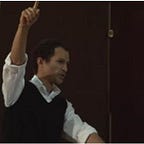Anger mounts over replica of German colonial statue in Swakopmund
The owners of a new upmarket restaurant in Swakopmund have sparked widespread controversy over their decision to erect a replica of the Reiter Denkmal, a statue commemorating German colonial conquest, on the premises of their restaurant.
Laidlaw Peringanda, the chairman of the Namibian Genocide Association, says he spoke to Norbert Sadlowski, one of the owners of Altstadt Restaurant about the replica statue, which Peringanda deemed offensive, divisive and highly insensitive, as the soldier on horseback with his rifle pointed towards the sky is a painful daily reminder of the grievous crimes committed by German soldiers against the native people in what was then known as German South West Africa.
“Yesterday I had a meeting with Mr Norbert Sadlowski, the owner of the Reiter Denkmal at the Alstadt Restaurant in Swakopmund and Mr Sadlowski told me that he will not remove the monument at the public restaurant because it is part of history,” he said on Tuesday.
The Namibian Genocide Association, which Peringanda leads, is also seeking acknowledgement and reparations from Germany for the harm done to native people by German soldiers during the period of colonial conquest, in particular for the infamous Extermination Order issued against all Nama and Herero people that did not adhere to Kaizer Wilhelm’s plans for the colony.
He also met with the commander of Swakopmund Police Station, Chief Inspector !Aebeb, and other senior police officers who advised him to put his complaint in writing. Peringanda says he has also written to the chief of the Namibian Police, Lt Gen Sebastian Ndeitunga, to address their concerns.
This reporter on Tuesday spoke to one of the owners of Altstadt Restaurant, Dieter Gühring, about the statue and its meaning. He said in their view there was nothing offensive about it, as it is part of history. He claimed that visitors tend to like it and that “many blacks” have also commended the owners for it.
Gühring said he was not aware of any complaints to the police about it, but would respond as soon as they were informed of any such development.
NGA want the replica statue removed
In their complaint to the police, the Namibian Genocide Association asked that the statue be removed as soon as possible from the premises of the restaurant, because it stands in violation of Article 23 of the Namibian Constitution, “as well as the fundamental human rights and freedoms” of affected people, such as the landless and impoverished descendants of the victims of colonial genocide.
Article 23, which deals with apartheid and affirmative action, stipulates that:
“The practice of racial discrimination and the practice and ideology of apartheid from which the majority of the people of Namibia have suffered for so long shall be prohibited, and by Act of Parliament such practices, and the propagation of such practices, may be rendered criminally punishable by the ordinary courts by means of such punishment as Parliament deems necessary for the purposes of expressing the revulsion of the Namibian people at such practices.”
Peringanda and his supporters hold that the replica of the infamous statue of the German soldier on horseback falls in the category contemplated in Article 23 as it commemorates German colonial conquest and genocide.
It is an affront and downright insult to the native people, particularly those whose fore-parents lost their lives, their land and livestock to the colonists, who continue to benefit from such historical injustices, he explained.
In 2013, then President Hifikepunye Pohamba ruled that the “Reiter Denkmal must be removed from public view” on the grounds that the colonial monument was offensive and stood in violation of the rights of black Namibians, Peringanda reminded the police.
The original Reiter Denkmal in Windhoek was then removed on Pohamba’s orders on 25 December 2013. When asked whether he agreed with the former president’s decision, Gühring said — in his view — there was nothing offensive about it.
Peringanda though says the replica statue of the mounted German soldier that towers over ordinary passersby “reminds us of how our ancestors were killed during the 1904–08 genocide”.
Much of old Swakopmund and the railway line that runs to Windhoek was — according to archival records and historians in the know — built using prisoners of war, who were reduced to the level of unpaid slaves, many of whom were worked, or beaten to death in the process.
The remains of the forgotten people who originally built old Swakopmund still lay scattered loosely along the banks of the Swakop River, where countless heaps of human bones can still be seen lying about.
- First published in Confidente on 4 April 2019
Related: New York museum closes access to ‘stolen’ Namibian bone collection
